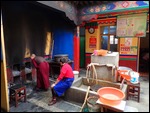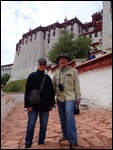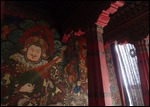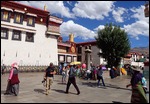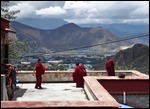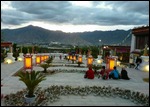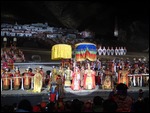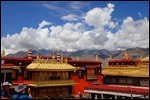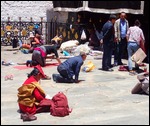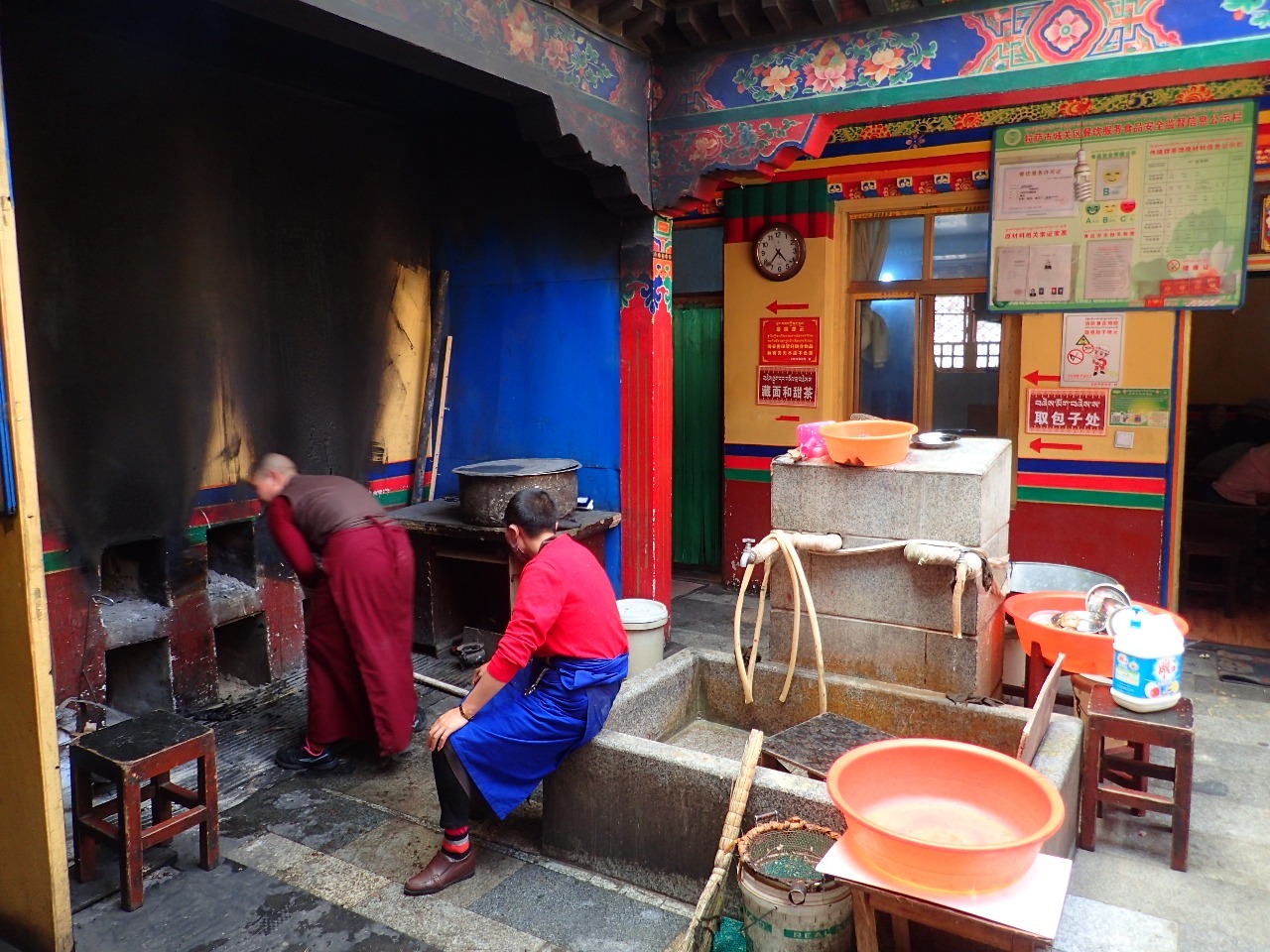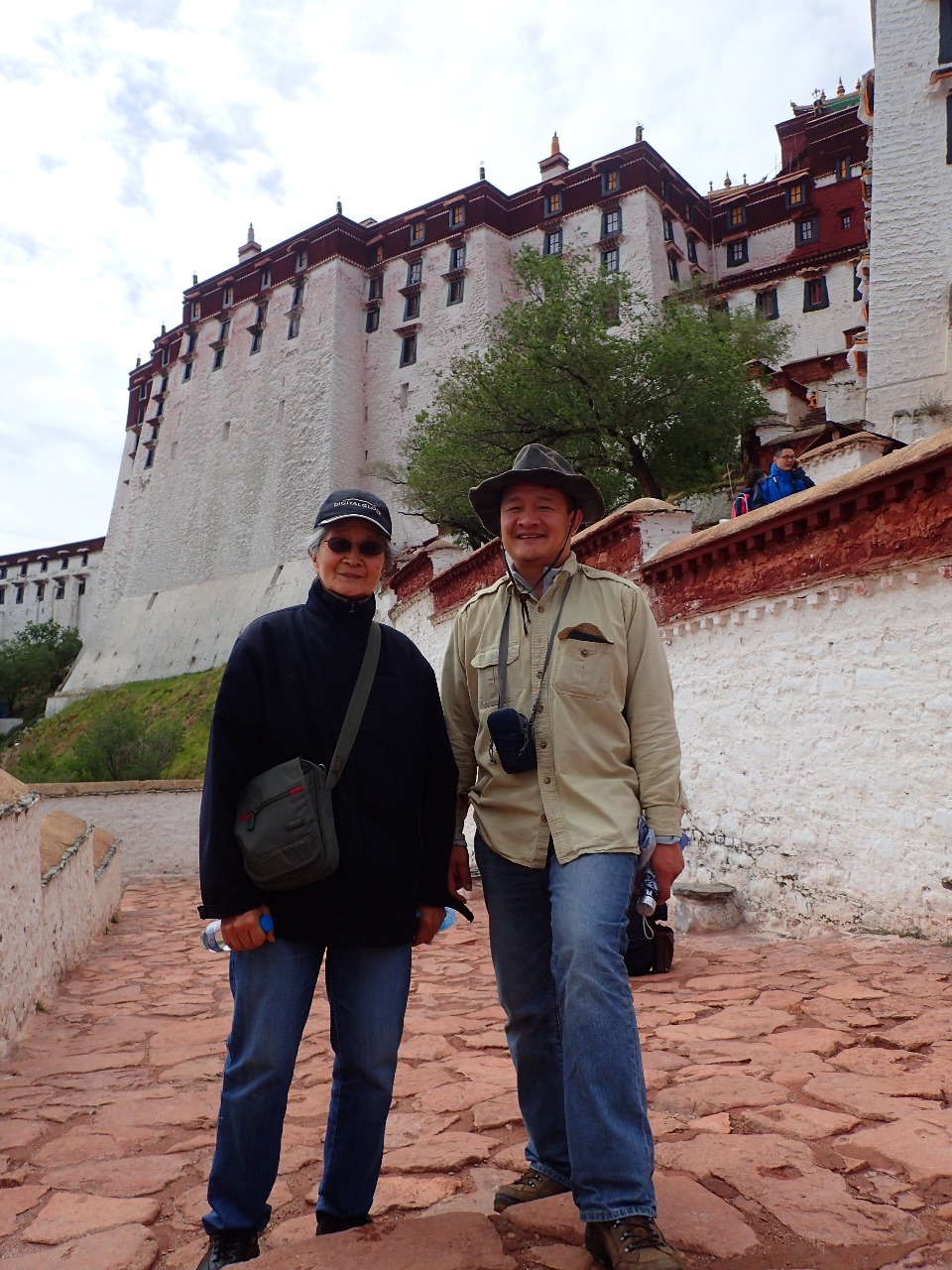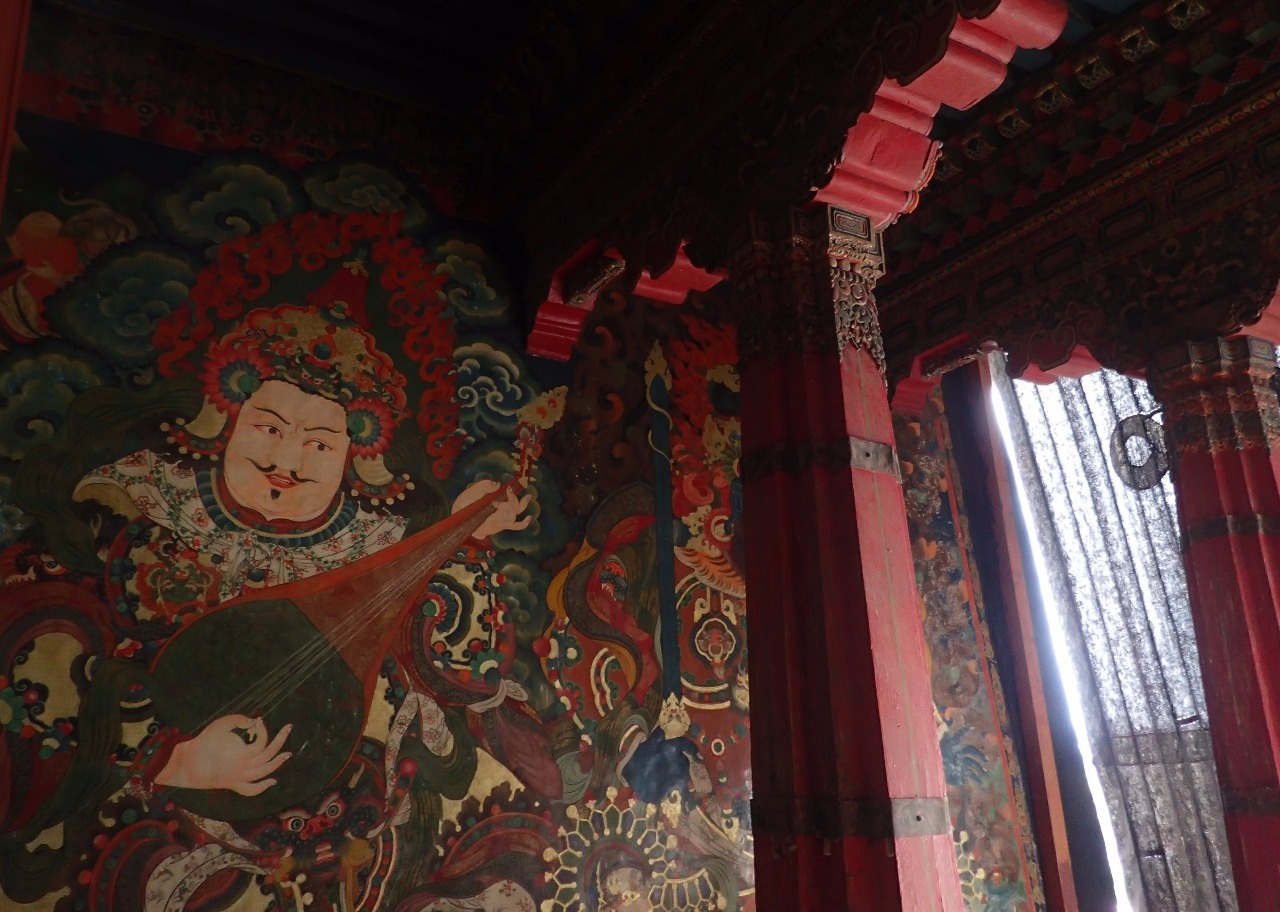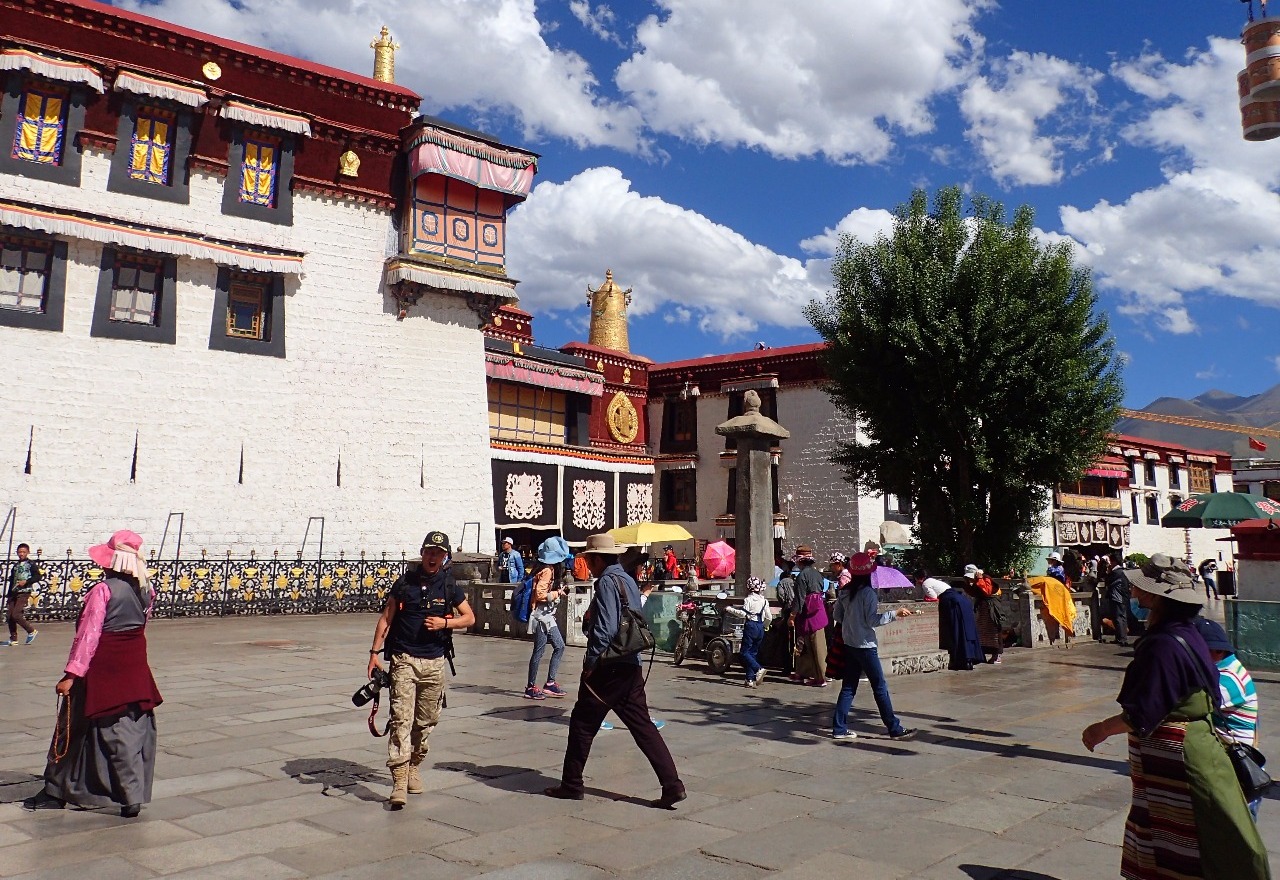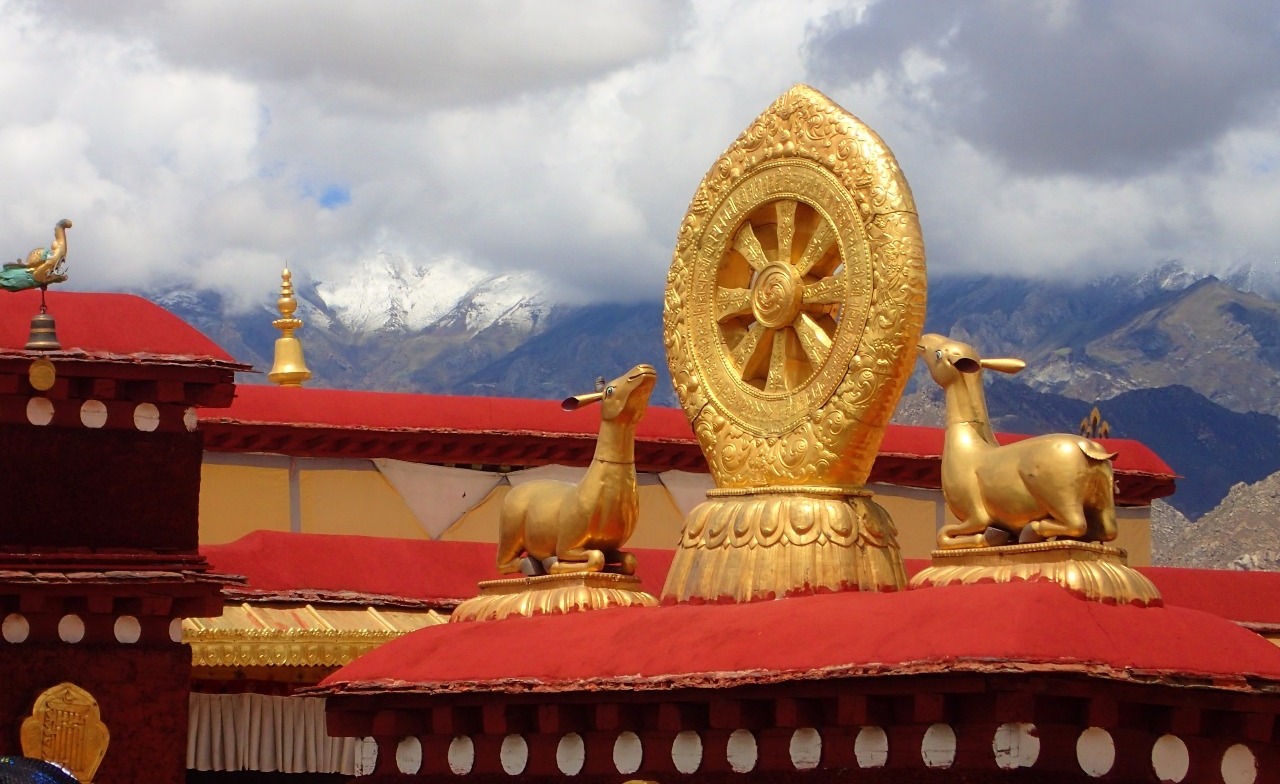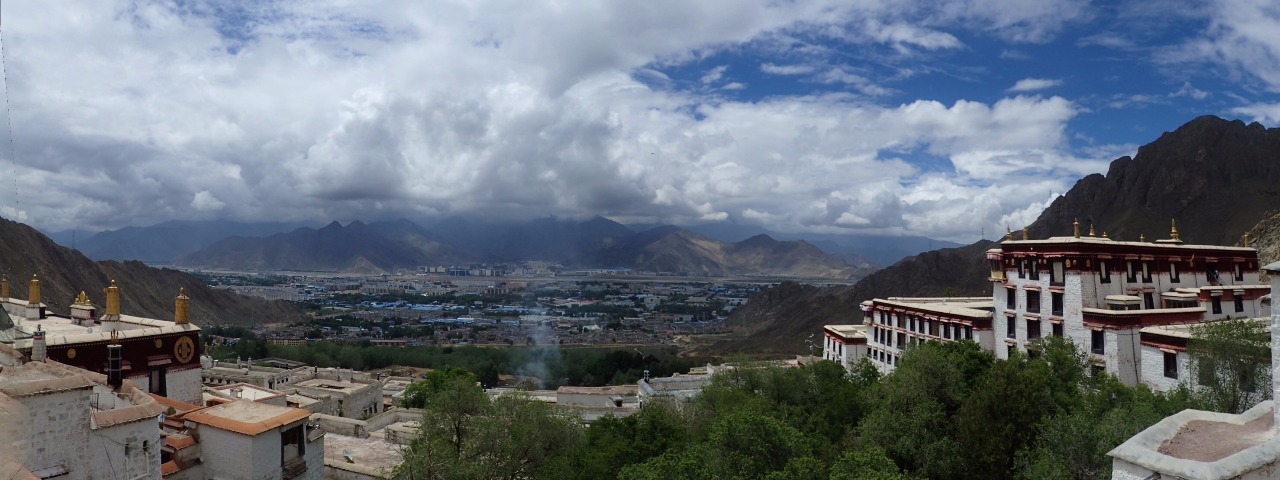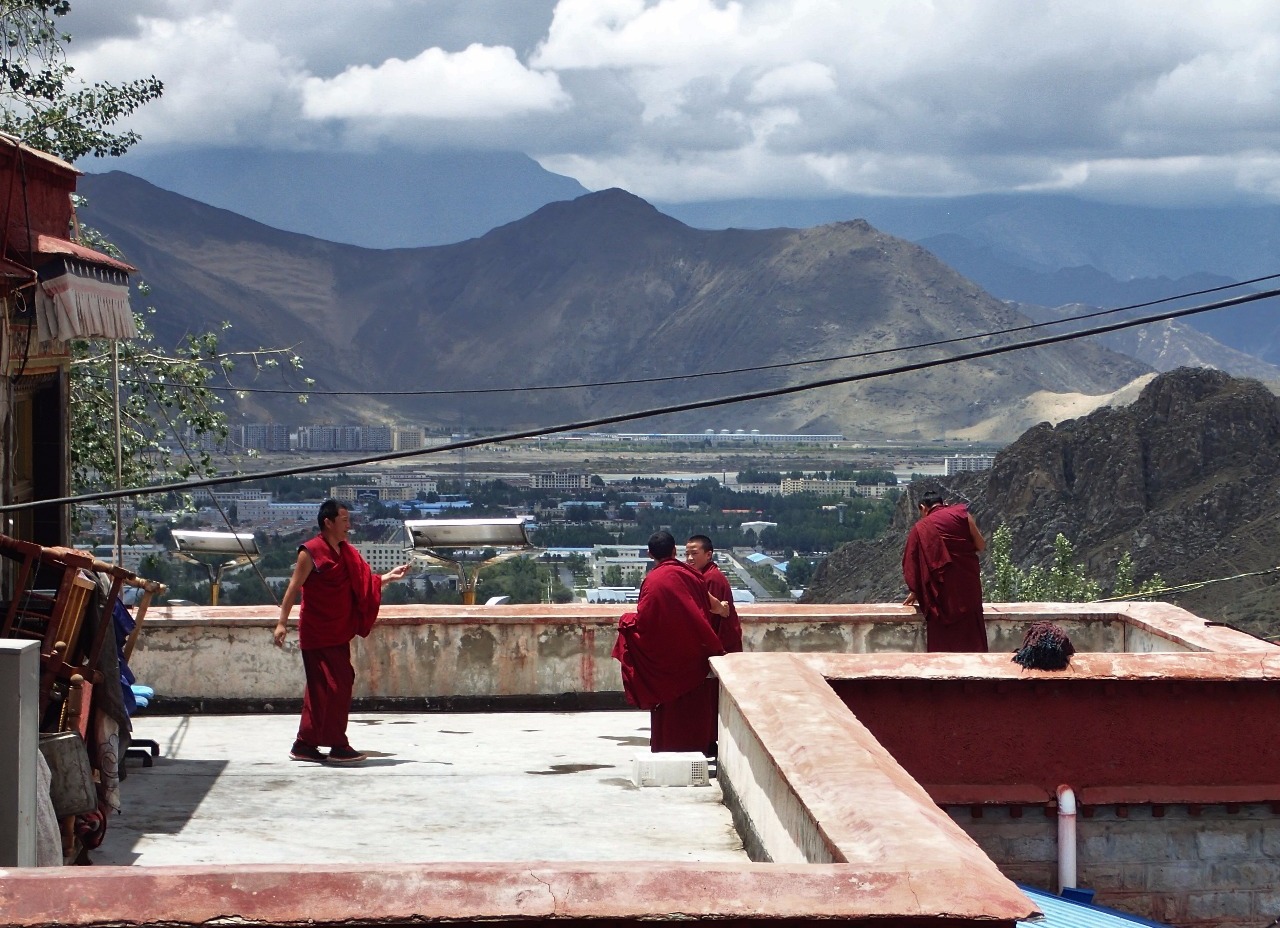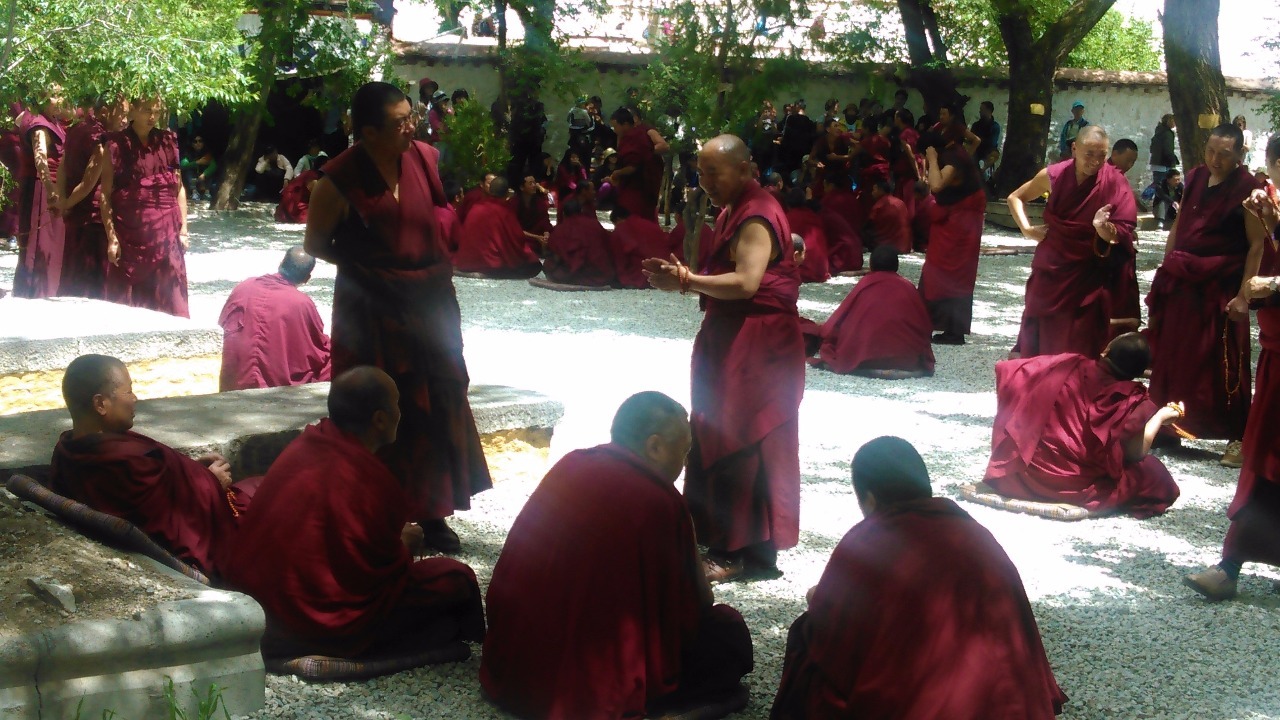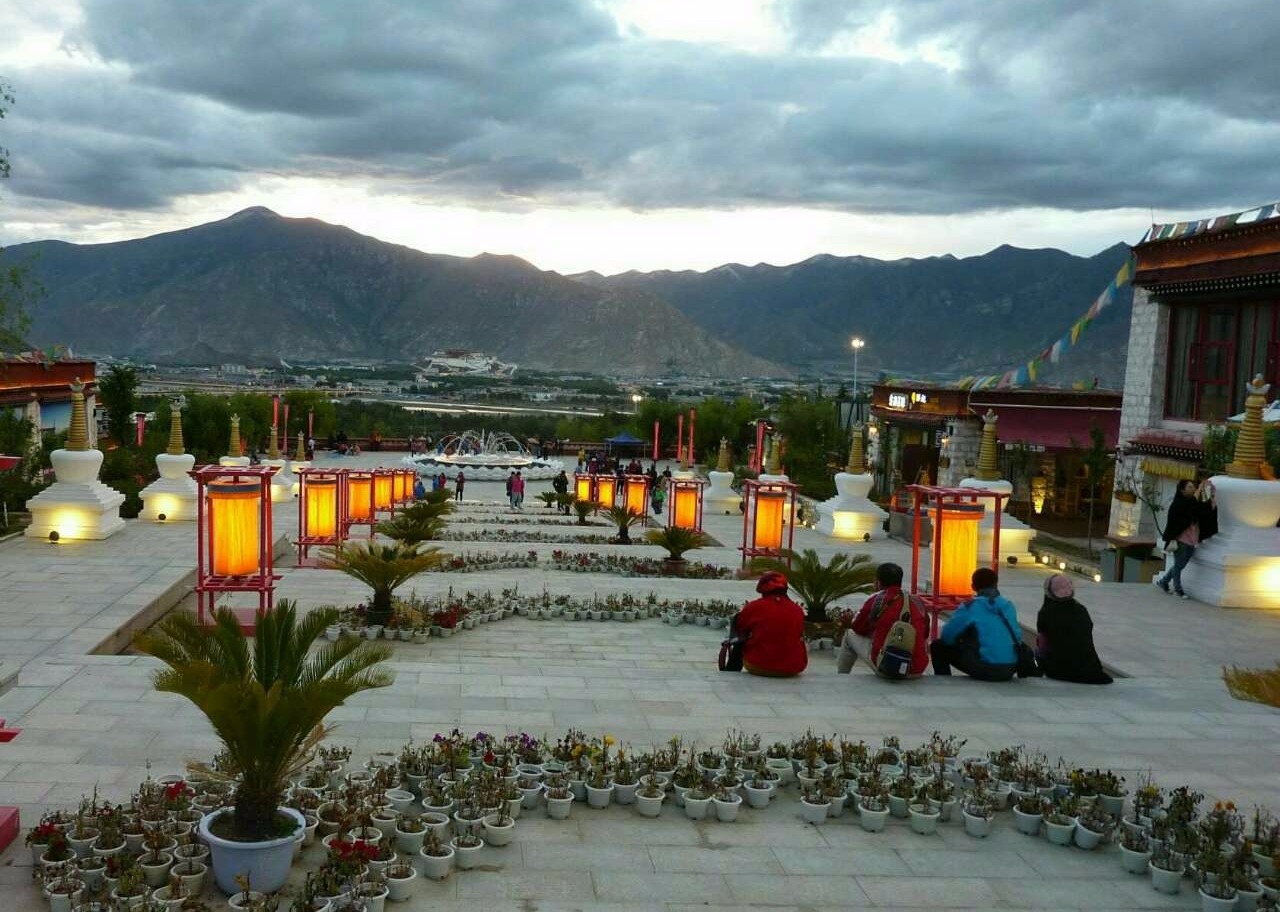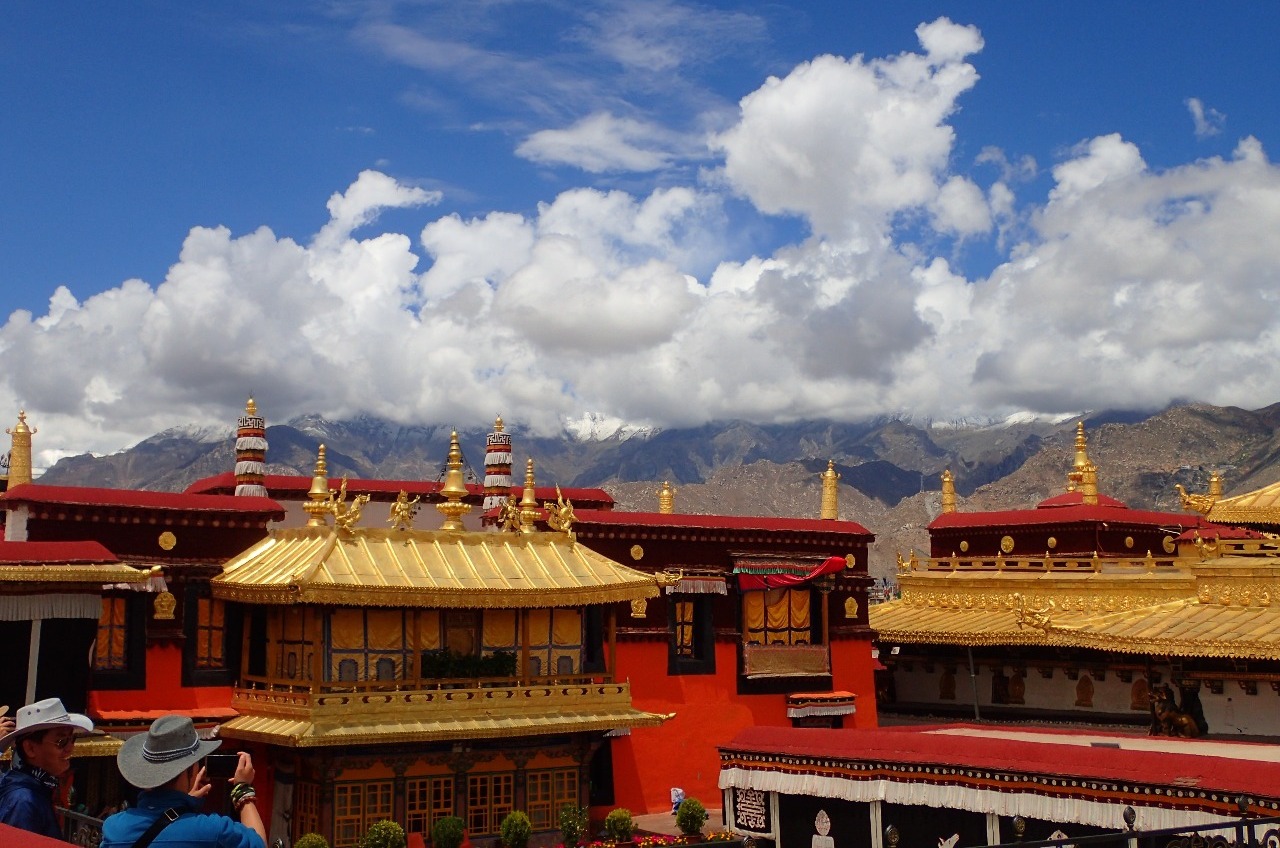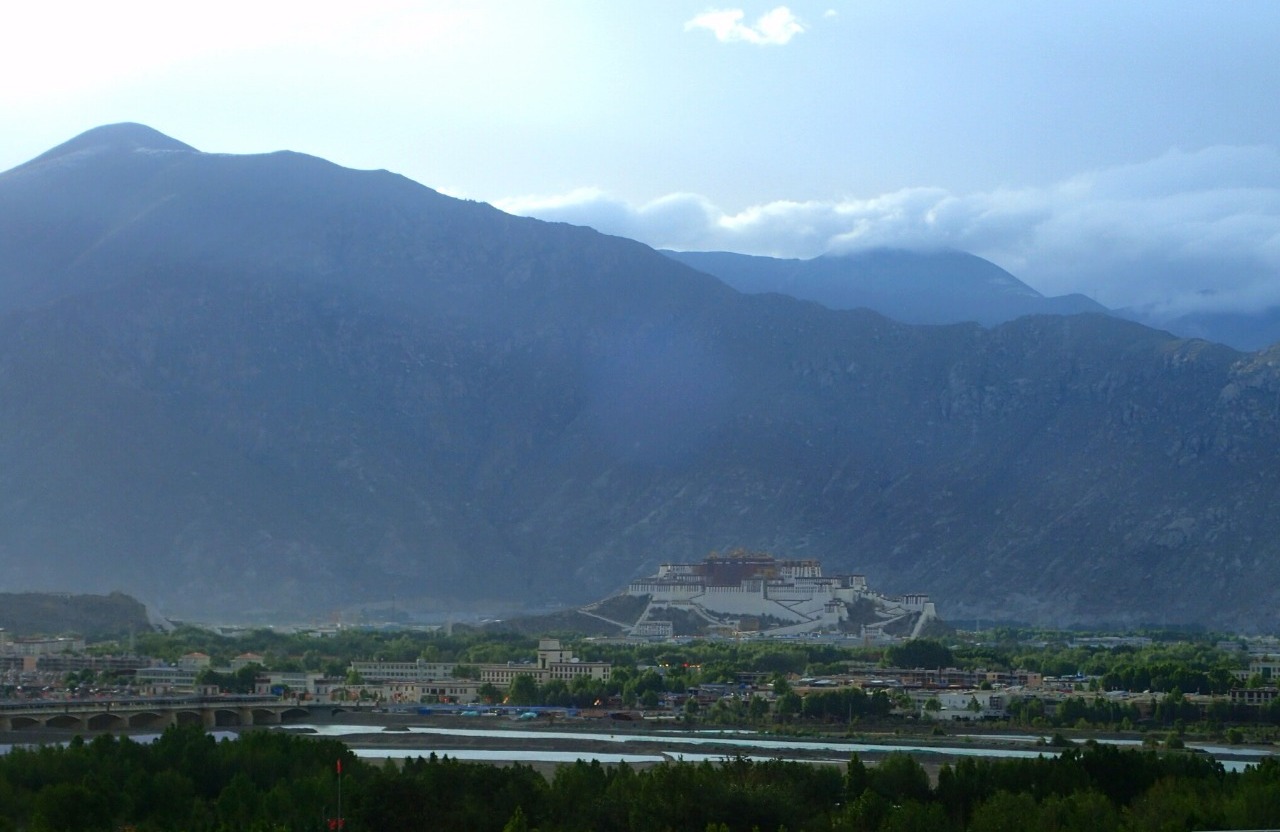The name Lhasa means "Place of Gods" in Tibetan. This is the capital of Tibet since the 7th century, also the holiest city in Tibet and center of Tibetan culture. One of the biggest palace-fortresses in Asia - Potala Palace, the oldest Buddha statue anywhere - the Jowo Sakyamuni Buddha statue dating to 5th century BC housed in the Jokhang Temple, and the three most important Yellow-Hat Buddhist monastic colleges in Tibet - the Ganden, Drepung, and Sera, all of these are must-sees for Tibetan pilgrims.
Eternal Lhasa still has the well-preserved treasures and bustling pilgrims that I first saw 14 years ago. One major change is the modern highways, railway station, and brand-new apartment blocks in the west and east outskirts, fueled by a craze of real estate investments that has swept up everywhere else in China.
Day 1
We checked into the Kyichu Hotel - a primarily English-speaking establishment a few blocks away from the Barkhor Street pilgrimage circuit. Our guide Trinley brought the cashier from Windhorse Tours to the hotel - a sharp looking young Tibetan man who collected our full payment for the 8-day tour. We made plans earlier to explore the streets with Glenda and Sara after some rest in the hotel, since they also stay at the Kyichu Hotel.
I lead the way into the Barkhor Street area on foot, heading into the heart of Lhasa where colorfully dressed Tibetan pilgrims constantly walk in the clockwise direction along the street full of shops and street vendors. Sara wanted to go the tea house attached to the Ani-Sangkhung Nunnery based on her research, so I asked around in Mandarin to find the way. After asking four people who directed us into the winding alleys, we finally came onto the nunnery, then the tea house in another alley nearby. The tea house sells Indian-style milk tea by the thermos at extremely low cost, with a small staff of nuns running the place. The tea room upstairs was full of long tables and benches more like a library; we simply sat down, had the whole room to ourselves, and chatted over warm tea.
Day 2
Our plan was to visit Potala Palace in the morning and Jokhang Temple in the afternoon. It rained in the morning but our reservation to tour the palace had a fixed time and could not be changed. We braved the rain after buying an umbrella from a street vendor, since the ponchos mom prepared weren't going to work. The key challenge was the over 300 stair steps it took to climb to the entrance to the palace. Since Lhasa is at a high enough elevation (about 12,000 feet), climbing heights quickly could lead to altitude sickness. We walked up slowly and took several breaks to appreciate the panoramic view from this high hill, with the golden roofs of Jokhang Temple shining through the mist about a mile away.
We climbed narrow ladders into the White Palace above the top terrace of the Potala, whose name references the abode of the Avalokiteshvara Buddha. The lineage of reincarnated Dalai Lamas are supposed to be the manifestation of Avalokiteshvara. Inside the White Palace we visited about a dozen chapels on four floors, then moved onto a few rooms at the top floors of the Red Palace. Stupendous amount of precious objects made of gold and gems, resplendent statues of various Buddhas and holy figures, the ancient cave where the original abode of the Tibetan kings was founded in the 7th century, all of these were impossible to believe without seeing them with our very eyes. A huge funerary stupa for the 5th Dalai Lama made out of five tonnes of gold is housed in the Red Palace, age-old prayer halls decorated with intensely artistic murals depicting saints and demons, as well as thousands of centuries-old hand-copied scripture books neatly preserved in huge shelves. The palace charges tourists expensive admission but charges Tibetan pilgrims a small nominal price. Many pilgrims come here to pay their respects to the former residence of the Dalai Lama, and give their donation to the various deities here, usually in cash but also in yak butter offerings.
Days later we made it to the plaza across the street from Potala Palace, where the best photos of the whole palace can be taken. A Chinese lady in her 40's came up to mom and wanted to take picture with her. The lady congratulated mom for being in the high altitude even though she is 78 years old. In other places people often recognized mom's age and found it unbelievable that she could be in Lhasa without altitude sickness.
Much more acts of worship happen around and inside Jokhang Temple - this is the very first temple built in Lhasa in the 7th century, it has welcomed pilgrims for about 1400 years. Jokhang Temple is free to pilgrims but charges a tourist admission. The previous day the four of us strolled to the entrance plaza of Jokhang Temple, stood there and watched for half an hour the endless gatherings of pilgrims in exotic colorful dress streaming past the entrance in the clockwise direction. Many were performing full-body prostration facing the entrance of this hallowed temple. Glenda commented that this is the best ever spot for people watching! On another day mom and I sat on a bench in this plaza, observing a small detachment of armed policemen (likely mixed Chinese and Tibetan troops) marching in an endless circle, also in the clockwise direction. Few people stood still here, everyone is either performing a clockwise circuit to pay religious respect, or otherwise swiftly walking past here to shops and other attractions. Many Tibetans are here in modern, casual dress but still with Tibetan style references; mothers pushing strollers with babies, monks in their red robes, nomads from afar in their fur jackets and hats, girls with elaborate hair braids decorated with copious amounts of jewelry.
The Jokhang houses the oldest known Buddha statue in Tibet - the Jowo Sakyamuni Buddha, brought here as a dowry of a Chinese princess (Princess Wencheng) in the 7th century, but supposedly made in 5th century BC during the Buddha's lifetime in India. According to Trinley the upper half of the statues was found in Tibet after China's Cultural Revolution in the 1960's devastated all religious establishments. The 10th Panchen Lama who was under house-arrest in Beijing accidentally found the missing lower half in Beijing's Lama Temple (Yonghegong), and begged the Chinese central government for it to be brought back to Tibet. This is the single holiest Buddhist relic in all of Tibet. The utter sincerity and respect of the Tibetan pilgrims toward the Jokhang is simply incredible.
The Jokhang is not a large temple, its chapels are laid out in a simple plan, with the main chapel facing west (The Potala Palace and the old city gate of Lhasa are to the west of the old quarter where Jokhang is located). The floors are made of large irregular ancient stones that have been polished by the feet of a thousand years' pilgrims. The chapel housing the Akshobya Buddha statue was the most revered - only pilgrims who donated gold powders could get close to it. The statue was surrounded by elaborate decorations of gold, precious stones, luxurious silk brocades, and flanked by other deities.
The upper level of Jokhang is crowned by a series of resplendent golden roofs, and golden symbols marking the teachings of Buddhism. The central symbols are the law wheel, accompanied by two golden deer, and flanked by drum-shaped victory standards also made of gold. We climbed to the roof level to take in the panoramic view of the whole of old city of Lhasa, whose valley is surrounded on all sides by rugged mountain peaks, some of which received white snow from this morning's rain. The unforgettable clouds are vividly three-dimensional, always moving and churning against the deep blue sky.
Day 3
Trinley and our driver Jampa took us to see the two main monastic colleges nearest to the city - Drepung and Sera. We made a late start in the morning to avoid the morning rains that came down daily from the Monsoon clouds that came north from India. Drepung Monastery was the largest monastery in the world in the old days - it housed upward of 10,000 monks who studied Buddhist theology here, and Drepung Monastery became a quasi-government of Tibet. The Dalai Lamas were the high priests of this monastery before the 5th Dalai Lama gained temporal power with the help of Mongolians, and subsequently moved to Potala Palace.
Drepung Monastery is built on a high hill offering dramatic views of the valley of Lhasa surrounded by rugged peaks. It took a lot of effort to climb up the hundreds of steps to reach the main buildings and prayer halls. Because of its association with the Dalai Lama lineage, Drepung Monastery is highly revered by Tibetan pilgrims. While we visited the monastery, all we saw were pilgrims paying respect to the various rooms inside the monastery where the Dalai Lamas lived and worked. Some pilgrims would drop to the floor once entering a room to pay respects. Pilgrims would crouch down to walk in the space underneath bookshelves housing Buddhist scriptures in order to get closer to enlightenment.
In the afternoon we visited Sera Monastery, close to the center of Lhasa and on lower elevation. The climb was much easier than Drepung Monastery. Fourteen years ago I visited this monastery and observed a debate session put on by the monks. The very animated discussions and challenges between a few hundred monks in a shady courtyard was very engaging. These debates were used for scholarly examinations in the old days, but now are held regularly for tourists. This time we're here also to observe the debate session by the monks. A lot of foreign tourists are here - numerous groups from Europe, USA, and also a large group from Brazil. I joked with Trinley that all the foreigners in town are here since nobody wanted to miss this debate event. I recognized a number of people from my hotel - the Kyichu Hotel. During the debate, some monks stood and some sit on the ground in the shady courtyard with many trees. The standing ones ask questions, make hand clapping guestures, pull a string a prayer beads along his arm, and stomp the ground. These are gestures said to help deceased souls underground to learn enlightenment, and help them improve the next reincarnation.
Trinley also described the reason many children were in Sera Monastery - they're here to receive blessing from the protective deities. Each child receives a black ink mark on his nose after they are blessed in the hall of protective deities. In particular boys that wet beds and were otherwise temperamental are often taken by parents to get this blessing.
After mom and I finished the day's tour, we asked to be dropped off near the Jokhang Temple. Mom noticed a booth selling tickets to the outdoor opera "Princess Wencheng". She heard her friends and family highly recommend this show, so we purchased tickets for the same evening's performance. The show has an 800-strong Chinese and Tibetan cast, it takes place in a custom designed outdoor theatre in a southern suburb of Lhasa . After some internet research we finally figured out how to take the charter bus to go to the event (the hotel staff was unable to help us find the information, probably because English speaking guests tend not want to see it).
The bus took us to the Lhasa River (Kyi Chu in Tibetan) area, then crossed into this brand-new development with grandiose views of Potala Palace across the river. The area caters to hip Chinese tourists with many chic buildings housing modern stores and restaurants - this is a big departure from central Lhasa where old age is the main theme. Young Chinese entrepreneurs from other provinces were here operating the posh and trendy businesses. We had dinner at a chic small cafe, then climbed hundreds of steps up the hill illuminated by beautiful Japanese-inspired lanterns, through flower displays, and always a direct view toward Potala Palace in the distance. The theatre is a mini-Potala Palace at the top of the hill; we entered through X-ray security then found our outdoor seating. The seats were small and somewhat cramped, the air was increasingly chilly, but we were prepared with warm clothes, hats, and gloves.
The opera ran one and a half hour, and was quite satisfying. One minor annoyance was the simulated snow that rained down from the canopy structure above - these were soap bubbles that at one point rained down with an unexpected high density. The opera uses a real mountain as backdrop, and shone lighting that made it look like grass, then snow. The large, complex stage had many levels where performers could appear. Huge backdrops depicting royal palaces in China and Tibet were moved about mechanically. The acts had large casts most of the time dancing and moving about, sometimes with large herds of yaks, sheep, dogs, and long lines of horses. At one point dozens of horse riders galloped at top speed across the stage, it was very impressive.
Although the "Princess Wencheng" opera was targeted to Chinese tourists to discover exotic Tibetan culture, it has high-quality artistry and a theme of cross-cultural unity. The opera showcased traditional Tibetan masked dances, emphasized the rugged grandeur of Tibet, and sent a message of Buddhist compassion. It was definitely worth it.
